
3441 N. Ashland Avenue
Chicago, Illinois 60657
(800) 621-1008
www.loyolapress.com
2013 Elisabetta Piqu
All rights reserved.
2013 Grupo ILHSA S. A.
All rights reserved.
2014 Loyola Press, English edition
All rights reserved.
Originally published as Francisco. Vida y revolucin by Elisabetta Piqu (Buenos Aires, Argentina: Editorial El Ateneo, 2013). The exclusive world rights for the Spanish language are held by Editorial El Ateneo, an imprint of Grupo ILHSA S. A.
Translated by Anna Mazzotti and Lydia Colin
Cover art credit: Vatican Pool/Contributor/Getty Image News/Getty Images
eBook ISBN: 978-0-8294-4214-4
Based on the print edition: 978-0-8294-4213-7
Library of Congress Control Number: 2014948226
14 15 16 17 18 EPUB 5 4 3 2 1
I am the same as I was in Argentina. Pope Francis told me this recently in a conversation over lunch at the Casa Santa Marta. For the world Pope Francis is the man of surprises, but for Elisabetta Piqu he is a reincarnation of Padre Jorge, the Jesuit Archbishop of Buenos Aires. She was quick to realize that his choice of a name was in itself a program to recover the essential values of the gospel: to overcome ones own sinfulness; to be on the side of the poor; to dialogue with everyone, even those of other faiths or of no faith; to go to the periphery carrying the light and the joy of the Gospel.
Elisabetta Piqu has produced a most compelling description and analysis of Pope Francis. Pope Franciss revolution is like that of Saint Francis of Assisi, whose mission to rebuild the Church really began the day he kissed the leper. Being able to accompany Pope Francis last October 4 on his pilgrimage to Assisi was indeed a spiritual experience. The Holy Father began the day at the Istituto Serafico where he embraced a hundred severely handicapped children, their families, and their caregivers. He reminded us that when the Risen Christ appears to the Apostles, the first thing he does is show them his wounds, those wounds that he carries with him when he returns to the right hand of the Father. In kissing these children, the Holy Father is kissing the glorious wounds of Christ. All of this is but a continuation of a vocation that stirred in his heart when Jorge Bergoglio was a young man in Buenos Aires.
In some ways this biography reminds me of George Weigels biography of John Paul II, which demonstrates the clear connections of the priestly ministry of the young Karol Wojtyla and the themes of John Paul IIs pontificate. Betta Piqu shows us how Francis was the parish priest of Buenos Aires before becoming the parish priest of the world, with the same love for the poor and the marginalized, the same desire to reach those on the periphery with Gospel joy.
What we have in our Holy Father is a Pope who has embraced the vocation of being a follower of Ignatius, who once declared that he wanted to be a saint like St. Francis of Assisi. Bergoglio is thoroughly Jesuit, thoroughly Ignatian, right down to the fascination with St. Francis. Shortly before his ordination, the thirty-two-year-old Bergoglio wrote a short credo. He has kept that piece of paper as a reminder of his core convictions. It is a clear indication of the habit of self-reflection so deeply ingrained by his Jesuit formation.
In his credo, he speaks of his own history and says that on a spring day of September (in the Southern Hemisphere!) The loving face of God crossed my path and invited me to follow Him. He often hearkens back to that September day, the day of his own spiritual awakening and conversion on the Feast of St. Matthew that found him breaking away from his friends to go to church to receive the sacrament of confession. It was there that he first felt called. Later, he shared that his favorite painting in Rome is Caravaggios Calling of St. Matthew, where Jesus is pointing at the tax collector. Bergoglio said that when he looks at that painting he feels that Jesus is pointing at him. It is not surprising that Father Bergoglio, when appointed Bishop, chose the phrase Miserando atque eligendohaving mercy and calling mefrom the homily of the Venerable Bede on the Feast of St. Matthew, the publican converted and called to be an apostle.
That experience as a seventeen-year-old was, in his words, the astonishment of an encounter... of encountering someone who was waiting for you.... God is the one who seeks us first. The Holy Father views morality in the context of an encounter with Christ that is triggered by mercy; the privileged locus of the encounter is the caress of the mercy of Jesus Christ on our sins, and thus a new moralitya correspondence to mercyis born. He views this morality as a revolution; it is not a titanic effort of the will but simply a response to a surprising, unforeseeable, and unjust mercy. Morality is not a never falling down but an always getting up again. The Holy Fathers emphasis on mercy helps us understand why the author of this book has chosen to include revolution in the title.
In keeping with his own Jesuit formation, Pope Francis is a man of discernment, a practice that at times results in freeing him from the confinement of doing something in a certain way because it was always thus. There are many indications that Pope Francis is very comfortable in his own skin and does not feel constrained by practices of pontificates in the past. But to me one of the most striking examples of this clarity of vision and confidence is his decision to celebrate the Holy Thursday Mass during the first two years of his pontificate outside the traditional Rome basilica. He chose to celebrate Mass at a residential rehabilitation center for the disabled this past year, and the year before he celebrated it in a Rome prison for juvenile offenders.
On Holy Thursday, Jesus washed the feet of the Twelve. They were shocked and unhinged by the experience. St. Peter rebelled at the thought and capitulated only when Jesus insisted. For most of us, it has become a rather stylized liturgical gesture that is but a weak reflection of what the original foot washing entailed. Pope Francis replicated the surprise and the shock of the apostles even as he dismayed those who preferred the stylized liturgy in a basilica.
This was not an innovation for Pope Francis, for as Archbishop of Buenos Aires, he had been doing this each Holy Week. While many were surprised that the Holy Father did not opt to celebrate the Holy Thursday Mass as other popes had done in the Basilica of St. John Lateran, the Holy Father was jostling our imaginations because we have grown so complacent that we can no longer see beyond the familiar custom to glimpse the challenging truth. With a simple gesture, the pope was challenging core assumptions about power, authority, and leadership. As he told the prisoners, this is a symbol, it is a sign. Washing your feet means I am at your service, he said.
In a world that is so often polarized and divided, Pope Franciss message has brought hope into peoples lives and enticed many people to look at the Church again. The field hospital imagery is more compelling than that of the museum or the concert hall.
Most Catholics have felt energized by the focus on Gods love and mercy and on the clarion call to embody the ideals of the Churchs social gospel in our relations with others, especially the most vulnerable and forgotten. The Holy Father has made us more aware of Lazarus, covered with sores, who is on our doorstep suffering alone while we are absorbed in our pursuit of entertainment and creature comforts. Evangelii Gaudium reminds us: Sometimes we lose our enthusiasm for mission because we forget that the Gospel responds to our deepest needs, since we were created for what the Gospel offers us: friendship with Jesus and love of our brothers and sisters.

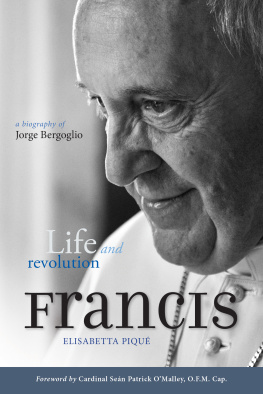
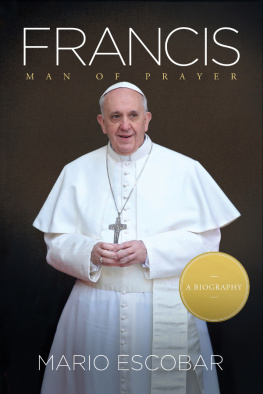
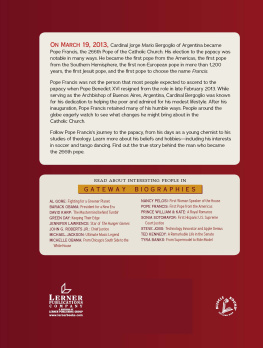

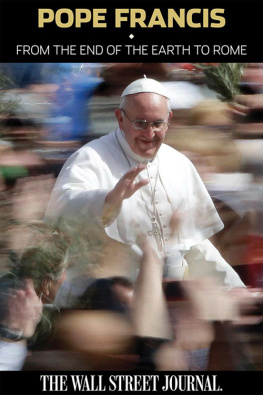

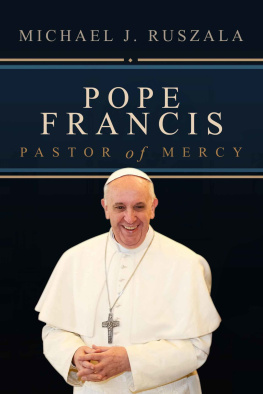
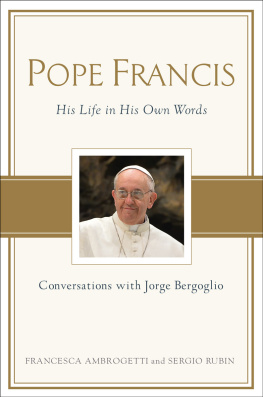
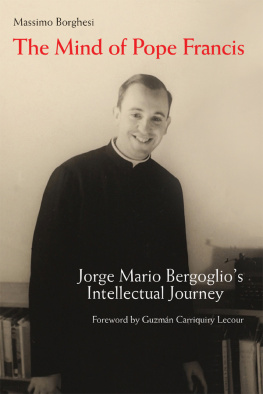
![Pope Francis [Jorge M Bergoglio] et al. - Open Mind, Faithful Heart: Reflections on Following Jesus](/uploads/posts/book/106755/thumbs/pope-francis-jorge-m-bergoglio-et-al-open.jpg)
